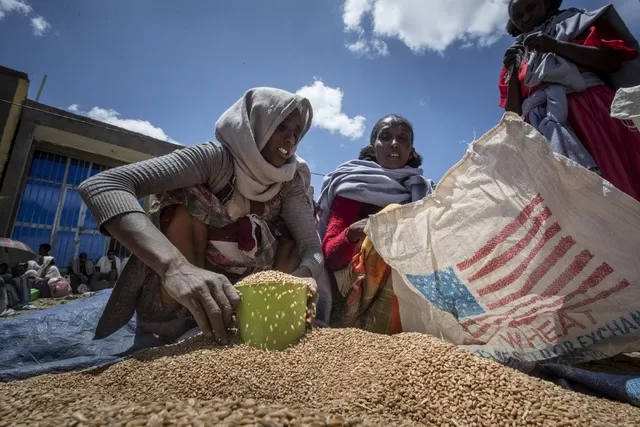Madrid. Around 1.2 million children suffer from severe acute malnutrition in Ethiopia, according to United Nations data, with the situation in the Afar, Amhara, Oromia, Sidama, South West and Tigray regions being especially worrying.
“I have a rather dense and gloomy humanitarian update from Ethiopia,” the spokesman for the United Nations Secretary General, Stéphane Dujarric, advanced this Friday. Only “in June and July, more than 26,000 mothers and children received nutritional support in Amhara and southern Oromia,” the agency spokesman said.
In addition, “according to national authorities, more than 16,800 cholera cases were reported as of August 2, including 212 related deaths.” For its part, “malaria, as of July 30, affected more than 1.7 million people and has claimed 200 lives.
In this regard, Dujarric pointed out that there are more than 30 UN agencies and international and national NGOs “working hard to combat the effects of malnutrition, which continues to be a concern” in the aforementioned regions.
From the UN, considerable emphasis was placed on the need to offer “timely food assistance”, as well as on the “prior positioning of emergency medicines and medical supplies for the affected people”.
However, the reality is that “the humanitarian appeal of 4 billion dollars (about 3,673 million euros) for 2023 for Ethiopia is only 27 percent funded,” according to the United Nations.
Likewise, “the food sector has received less than 25 percent of the 2 thousand 200 million dollars (around 2 thousand 20 euros) necessary,” lamented the spokesman for the secretary general.
Four months ago, the UN World Food Program (WFP) suspended food aid to Ethiopia, justifying its decision based on widespread theft and diversion of critical aid in the country.
Now the agency has started to implement new measures and enhanced controls for the delivery of food assistance, distributing some food supplies to a limited number of districts in the Tigray region, according to press reports.
The conflict in Tigray erupted in November 2020 after an attack by the Popular Front for the Liberation of Tigray (TPLF) against the main Ethiopian Army base, located in Mekelle, after which the Ethiopian Prime Minister, Abiy Ahmed, ordered an offensive against the group after months of tensions at the political and administrative level, including the TPLF’s refusal to recognize an electoral postponement and its decision to hold regional elections on the sidelines of Addis Ababa.
The UN estimates that some 20 million people need humanitarian aid in Ethiopia, one sixth of the total population. In the case of Tigray, the region has been a recurring focus of fighting between government forces and the Popular Front for the Liberation of Tigray (TPLF), although tensions have eased after an agreement between the parties.






